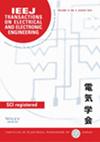求助PDF
{"title":"Applying RetinaNet Machine Learning Models for Hot-Spot Detection in Thermal Images of Photovoltaic Panel","authors":"Nguyen Phuoc Hoang Khang, Nguyen Minh Triet, Huynh Van Tuan, Nguyen Chi Nhan","doi":"10.1002/tee.70067","DOIUrl":null,"url":null,"abstract":"<p>In recent years, the remarkable development of the solar power industry has been undeniable. This led to the necessity of monitoring and maintenance of solar power plants due to many issues and failures that affect the efficiency and lifespan of the system. One of the most common fault cases of solar systems is the hot spot in photovoltaic panels created by the mismatch of cells in the panel due to incompatible environmental conditions or physical damage causing the heat up in lower power produced cells. The hot spot is detected through thermal image capture by a thermal camera and analyzed through image processing techniques with manual adjustment and testing. With recent significant achievements and growth of machine learning methods in image processing and technical diagnosis, it is greatly possible to develop a machine learning model to perform hot spot detection for higher efficiency and automation. In this study, our research group proposes an application of RetinaNet to develop a model capable of detecting hot spots in photovoltaic panels through processing thermal images. © 2025 Institute of Electrical Engineers of Japan and Wiley Periodicals LLC.</p>","PeriodicalId":13435,"journal":{"name":"IEEJ Transactions on Electrical and Electronic Engineering","volume":"20 11","pages":"1882-1890"},"PeriodicalIF":1.1000,"publicationDate":"2025-06-01","publicationTypes":"Journal Article","fieldsOfStudy":null,"isOpenAccess":false,"openAccessPdf":"","citationCount":"0","resultStr":null,"platform":"Semanticscholar","paperid":null,"PeriodicalName":"IEEJ Transactions on Electrical and Electronic Engineering","FirstCategoryId":"5","ListUrlMain":"https://onlinelibrary.wiley.com/doi/10.1002/tee.70067","RegionNum":4,"RegionCategory":"工程技术","ArticlePicture":[],"TitleCN":null,"AbstractTextCN":null,"PMCID":null,"EPubDate":"","PubModel":"","JCR":"Q4","JCRName":"ENGINEERING, ELECTRICAL & ELECTRONIC","Score":null,"Total":0}
引用次数: 0
引用
批量引用
Abstract
In recent years, the remarkable development of the solar power industry has been undeniable. This led to the necessity of monitoring and maintenance of solar power plants due to many issues and failures that affect the efficiency and lifespan of the system. One of the most common fault cases of solar systems is the hot spot in photovoltaic panels created by the mismatch of cells in the panel due to incompatible environmental conditions or physical damage causing the heat up in lower power produced cells. The hot spot is detected through thermal image capture by a thermal camera and analyzed through image processing techniques with manual adjustment and testing. With recent significant achievements and growth of machine learning methods in image processing and technical diagnosis, it is greatly possible to develop a machine learning model to perform hot spot detection for higher efficiency and automation. In this study, our research group proposes an application of RetinaNet to develop a model capable of detecting hot spots in photovoltaic panels through processing thermal images. © 2025 Institute of Electrical Engineers of Japan and Wiley Periodicals LLC.
应用retanet机器学习模型进行光伏板热图像的热点检测
近年来,太阳能发电产业的显著发展是不可否认的。由于许多影响系统效率和寿命的问题和故障,这导致了对太阳能发电厂进行监控和维护的必要性。太阳能系统中最常见的故障案例之一是由于不相容的环境条件或物理损坏导致低功率电池发热而导致面板中的电池不匹配而产生的光伏板中的热点。通过热像仪捕获热图像来检测热点,并通过图像处理技术进行人工调整和测试来分析热点。随着近年来机器学习方法在图像处理和技术诊断方面取得的重大成就和发展,开发一种机器学习模型来执行热点检测以提高效率和自动化是非常可能的。在本研究中,我们课题组提出应用retanet,通过处理热图像,开发一个能够检测光伏板热点的模型。©2025日本电气工程师协会和Wiley期刊有限责任公司。
本文章由计算机程序翻译,如有差异,请以英文原文为准。


 求助内容:
求助内容: 应助结果提醒方式:
应助结果提醒方式:


